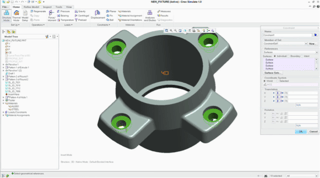 More and more, manufacturers are opening their eyes to the possibilities and benefits of PTC Creo Simulate, to understand, identify and resolve design issues early in the design process. In an increasingly competitive market place, manufacturers need to be able to validate product performance, improve quality and reduce costs.
More and more, manufacturers are opening their eyes to the possibilities and benefits of PTC Creo Simulate, to understand, identify and resolve design issues early in the design process. In an increasingly competitive market place, manufacturers need to be able to validate product performance, improve quality and reduce costs.
Customers demand technology to support strategic moves
A recent Market Analysis Report by CIMdata noted that that simulation and analysis had been the fastest growing segment in PLM for several years in 2012 and estimated that by 2017 this market would grow to at least $7 billion. It’s a growing market that manufacturers are increasingly turning to in order to optimise their processes.
Having integrated CAD and CAE tools to enable simulation early in the design process, drive product innovation and improve quality and performance.
Creo Simulation enhances your capabilities
In 2013, PTC released Creo Simulate 3.0, which offered over thirty strategic projects. The product launch included enhancements on things like shoring up the user interface and making things more consistent. By improving the user experience from Creo Parametric to Creo Simulate, users are now able to perform a range of analyses, from linear and non-linear static, to thermal, modal and fatigue.
The tool’s comprehensive set of analysis capabilities allows you to study any 3D virtual prototype before you make the first physical part. This empowers the designer because PTC’s software packages help manufacturers lower production costs by decreasing the need for physical prototypes. And this has huge benefits for the entire production process, increasing durability, reliability and safety.
Key Simulation Features and Benefits
To round things up, here are four main advantages why using PTC Creo Simulate won’t go away any time soon:
- You obtain detailed data that provides insight into how product designs will perform in the real world – this can only get better over time!
- You can carry out a full range of Computer-Aided Engineering analyses, including linear static, modal, buckling, contact and steady state thermal – how’s that for 360 degree view for product analysis!
- The tool helps increase quality and innovation by allowing quick, real-time comparison of multiple design iterations and variations – we’re always searching for better quality!
- The software decreases development costs by reducing the need for physical prototypes – reducing costs and time are always a priority!
PTC have also been heavily focused on product improvements which is a result of receiving a lot of feedback from customers and experts in the field. They are a confident company and their efforts in the marketplace will continue to add value to their customer experiences.
